In search of fort Rajewski. 2 part
From the memoirs of contemporaries and the surviving plan of the fort, the picture is as follows. The fortification structure had an irregular trapezoidal shape with sharp corners and flanges flanges. Thus, only two sides of the fort were of equal length in 130 meters, and the other two - 120 and 140 meters. At the corners of the fortress, three semi-bastions were built, as well as one bastion overlooking the most important section: the strategic section of the Anapa-Novorossiysk fortification road.
The fort had only one fortress gate on the south side, i.e. looking at the Anapa Valley. Inside there were two barracks (each designed for a hundred people), an officer’s house, a powder keg and a safe area for keeping ammunition. In the center of the fort was a parade ground and a small chapel. And, of course, did not forget to put the cradle for one of the most important parts of the soldier’s life - two kitchens and a cellar for storing supplies. During the official completion of the work, the fortifications were consecrated and were given a solemn gun salute. And a difficult service began to flow in the distant outposts of the empire.
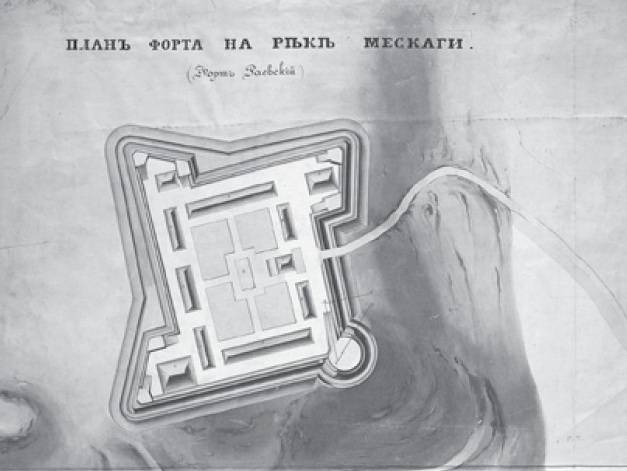
Over time, the fort’s defenses naturally changed. In 1846, a stone defensive wall with loopholes was installed along the fortification shaft. Apparently, torrential rains, sometimes lasting up to several weeks in a row between the end of autumn and the end of spring with a break in frost and gusty wind, began to turn the land part of the fortification into a melted candle.
By 1848, the garrison of the fort consisted of a company of the Black Sea Linear Battalion No. XXUMX, half companies of garrison gunners and a Cossack detachment. However, since the fort had intermediate status, it served not only for the purposes specified in the first part, but also served as a temporary shelter and base for the troops moving from Anapa to the mountainous regions of the Caucasus, or vice versa - from the Caucasus to Anapa, which needed a respite for the wounded and so on. But in view of the fact that the internal premises of the fort were distinguished not only by super-Spartan modesty, but also by their extremely small size, the forstadt was soon built next to the fortification. Vorstadt was a classic small settlement outside the walls. In it the passing large detachments settled.
Already some of the above points of service on the fortifications of the Black Sea line give some idea of how much "comfort" the garrisons of the forts used. According to the memoirs of contemporaries of those difficult times, there was a proverb among the officers in the Caucasus: “Who among them will not get away from drunkenness or marry a drunken hand on the first woman who came to her without a certificate of her behavior and origin, is of iron character”.
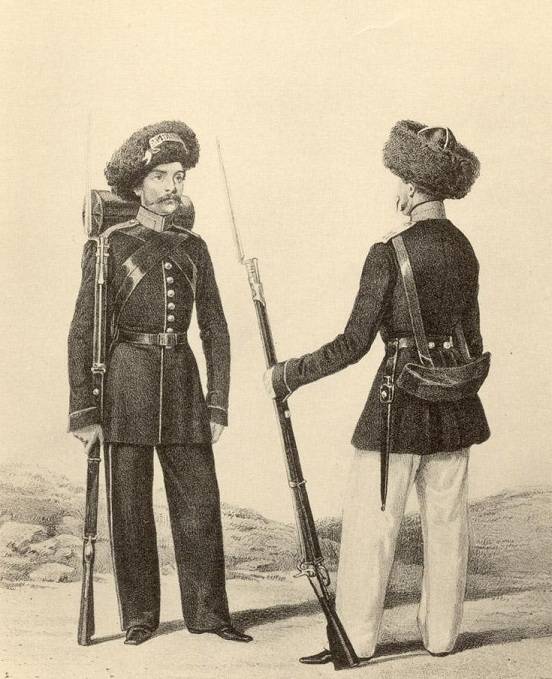
Soldiers of the Black Sea Line Battalion
No matter how much admit the degree of bravado and love for bikes in the above proverb, but the service on the Black Sea line of fortifications was in fact one of the most difficult and dangerous in the Caucasus. The showers, about which it is written, quickly swamped dry ravines and lowlands, and some of them did not dry out even in the 40-degree heat. And previously seemingly dry areas during the descent of turbulent flows from the mountains, often turning into real mudflow, instantly became a shallow lake. Such a natural reservoir instantly began to bloom, becoming a hotbed of infections and ubiquitous insects, quickly rising on the wing in order to tell the medical world something new. Such swampy places in these parts are called fluxes. In the certificates of diseases suffered by the garrisons of the fortifications, even “fever with cramps” appear.
And the clouds of stinging midges raged from mid-spring to late autumn. The officers, who slept separately from the rank and file, installed thick canopies over the beds, and carefully covered the windows with muslin. And the rank and file Cossacks fled in a more peculiar way. They took care of themselves from bites, setting fire to manure and creating a draft. Not Indian incense, but the prospect of "writhing" is even worse. And even that was a certain privilege, since Often, the garrisons arranged "secrets" outside the fortifications, especially when they received information from spies or were waiting for the detachment to arrive. At such posts, the fire will not ignite.
By the way, it was precisely in such secrets that the Cossacks-reedoys were tempered and confirmed their name. After all, they had to lie for hours in the literal sense, a layer under a cloud of mosquitoes and without the opportunity to move, so as not to give out the position. Alexander Dyachkov-Tarasov, a pre-revolutionary historian who was born in 1867 in Abkhazia, indicates in his writings that legendary Black Sea rejects were born in Zakuban secrets and did not appear in predatory gangs on the Dnieper, where the nature of hostilities even with a paramilitary enemy was different. But this is a completely different topic and a completely different argument.
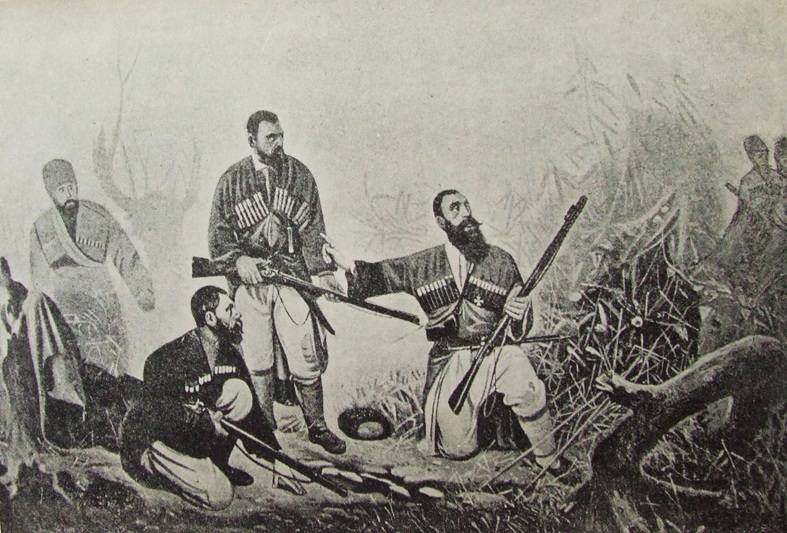
Plasters in secret
I should add that even in modern Novorossiysk, which is very built up, and the Tsemess river, which in the first half of the 19 century easily accommodated a corvette that was quite advanced for its time, turned into a small runoff (though prone to spill during the season), to this day within a few minutes walk from the center, “live”. Of course, on the map the reader will see them under the name Tsemesskaya groves. But it is necessary to charge the rains, as this lowland turns into a dangerous swamp. However, the "floods" are almost the last "light" cement city.
But back to the fortifications. In the infirmary, only severely sick and fever-depleted people were sent, as all who fell ill by the end of the summer or the beginning of the autumn could almost make up the entire garrison of the fort. At that time, similar attacks of “swamp fever” were treated with extremely expensive quinine (someone might have met this name in Chekhov’s stories), obtained from a quinine tree, which was cultivated until the middle of the 19 century exclusively in Peru. Bearing in mind the “generosity” of the capital and bureaucracy in relation to the fortified lines of the Caucasus and Kuban, in the critical months of the general incidence of “Black Sea healers” from the right bank of the Kuban they sent only a mixture of quinine with worn wormwood. But it was a shortage.
Also in the summer on the coastline, malaria was rampant, spreading by the same flying creatures and causing bloody diarrhea, hardening of the viscera, problems with lungs, etc. She was also treated with quinine. Considering that at that time, even among the luminaries of science, disputes were raging about treatment methods, as well as methods of infection, one can imagine the extent of seasonal epidemics in forts torn from the "mainland". The fort of Rajewski in this regard was “lucky” - it was adjacent to both the plains and the foothills on the Black Sea coast in its location.
Circassian rifles
But it was just the climate. The military activities of the garrison did not brighten up the soldiers and officers' service. Cases when the Circassians, in this case the Natukhais, having equipped a point quite remote from the fortification, became quite frequent (the heights covered with green carpet were particularly advantageous) began to fire on the fort with rifles and falcontes. Sometimes it just mentally plagued the garrison, and sometimes a stray shot claimed the lives of fighters. In this case, equip the pursuit of such "hooligans" was risky. Leaving the zone of defeat of the serf artillery without reconnaissance - the danger of being ambushed by superior enemy forces.
And this is not an exaggeration of the isolation of the fort. Even on the Black Sea cordon line, where stanitsas were built near the Kuban and Cossacks settled, it was restless. The villages were surrounded by regular observation posts, the roads were also regularly patrolled by Cossack trips. Villagers did not go on haymaking without weapons, and women were certainly accompanied by armed men, because the slave trade almost up to the end of the 19 century remained a profitable business for the highlanders. What can we say about the fort, standing on earth natukhaytsev?
Cossack rally at the post
Despite this, attacks were made more often. After all, the road, which protected the fort, became more lively. This is due to the expansion of new fortifications, and most importantly the construction of Novorossiysk fortress. Raevsky, like Serebryakov, was already seen in Novorossiysk as the largest port on the Black Sea coast of the Caucasus. This required food supplies and ammunition, and, most importantly, building material. Some cargo was delivered by sea, even from the Crimea, but some had to be transported by land. The situation with the supply of construction materials was so difficult that in August 1939, three companies of soldiers went to dismantle the ruins of the famous Sujuk-Kale. In order to secure the "demolition" work, the detachment had even two "unicorns".
Thus, the Raevsky fort becomes not only a guard of the road, an outpost of troops, a place of respite for military expeditions, but also a kind of intermediate supply base.
To be continued ...
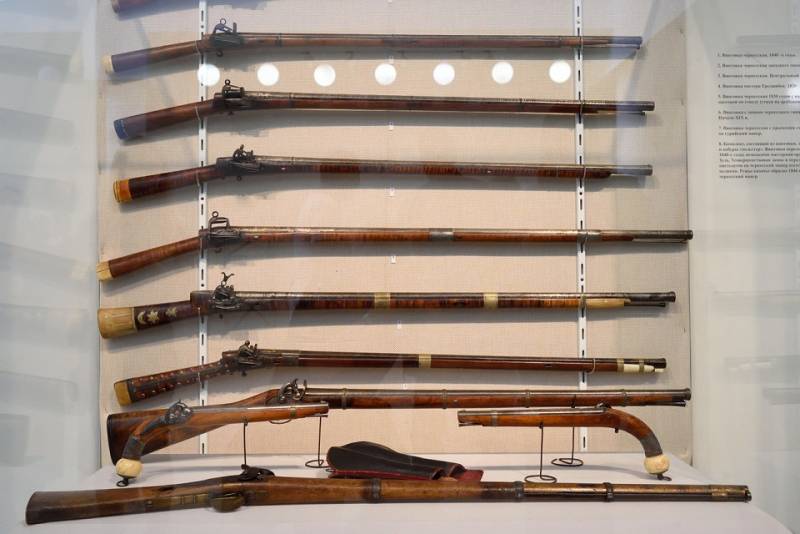
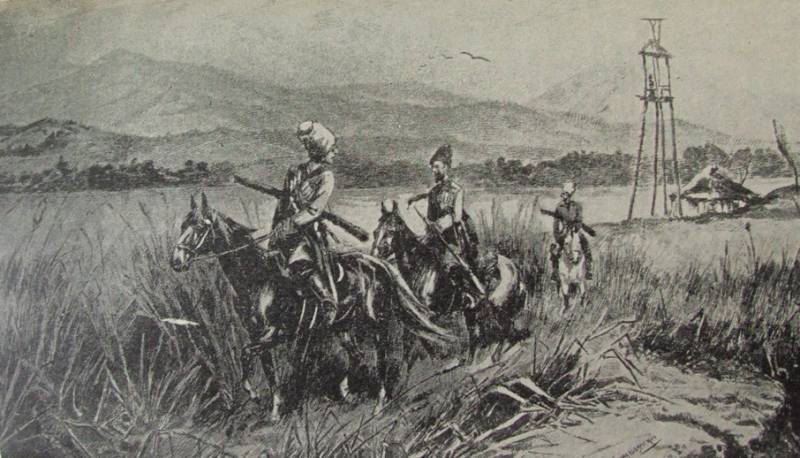
Information